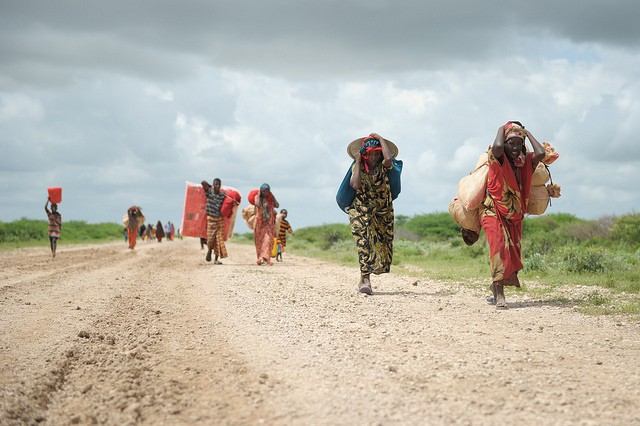What measures will we take to help the world’s poor farmers adapt to oncoming climate change? What will prevent the rural inhabitants of sub-Saharan Africa from starving as their crops shrivel in the predicted mega-droughts? The answer, apparently, is insurance.
Or at least that is how I read the statement on climate change from the heads of state at the G7 summit in Schloss Elmau, Germany in early June.

Who pays?
The sum required has been agreed since Copenhagen – a pot that reaches $100 billion a year by 2020. But where will the money come from? And how might it be spent?
First the cash. As host nation at the G7 summit, Germany agreed to up its potential 2020 contribution to 4 billion Euros a year. But an analysis by Oxfam in June found that less than a fifth of that – approaching 20 billion USD a year — was so far pledged from public finance. That is only a fifth of the way there.
According to Oxfam, investments by the rich world in helping poor nations cope with climate change are much less than sub-Saharan African governments are spending themselves to adapt to climate change, for which they are not responsible. Even some deft relabeling of money going into aid programmes and through the World Bank and other multilateral institutions is unlikely to make up the difference.
“It’s time countries who have done most to cause the climate crisis pay up for those who are paying its price,” said the NGO’s climate advisor Tim Gore.
But the idea that “countries” will deliver the cash is rapidly disappearing from the agenda of the rich world. Under their German chair, the G7 says funding will be “from a wide variety of sources, both public and private.” And the emphasis is clearly now on the private sector. “Mobilizing of private sector finance is crucial,” they say in their June statement. The WRI takes a similar view. Only private funds can make the sums add up.
The G7 says that private funds will “unlock the required investments in low-carbon technology as well as in building resilience”. But so far the evidence shows that private funders are much more interested in developing and selling low-carbon sources of energy than they are in funding resilience and adaptation to climate change. In the former case, there are big markets and potential carbon credits to be won.
An insurance offer
The Paris agreement will no doubt find ways, as the G7 puts it, “to incentivise investment in low-carbon growth [through] carbon markets.” But what about adaptation and resilience? So far there has been plenty of wordy aspiration, but little in the way of specifics.
Well, nearly. There was just one glimmer of light in the G7 statement, when it dropped the generalities and became specific. To meet the commitment to invest in resilience, it called for an “increase to 400 million in the number of people in the most vulnerable developing countries who have access to direct or indirect insurance coverage against the negative impacts of climate change related hazards by 2020.”
It wants to build, it says, on the success of projects such as the African Union’s African Risk Capacity (ARC) and the Caribbean Catastrophe Risk Insurance Facility (CCRIF). These are local initiatives. The ARC says it “is an African solution to one of the continent’s most pressing challenges, transferring the burden of climate risk away from governments – and the farmers and pastoralists whom they protect – to the ARC that can handle that risk much better.” The CCRIF is intended to provide insurance against hurricane risk, rather than wider issues of climate change.
Of course these projects have value. But is this as far as we have come before Paris? Is this the best idea on offer, insurance schemes? This is not so much adaptation as privately-organized financial recompense for damage done by extreme weather events that climate change will likely bring. Before we get to Paris, it would be nice to think that there are some other ideas kicking around. But where are they?






/index.jpg?itok=EzuBHOXY&c=feafd7f5ab7d60c363652d23929d0aee)










